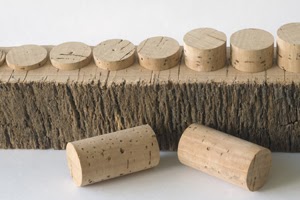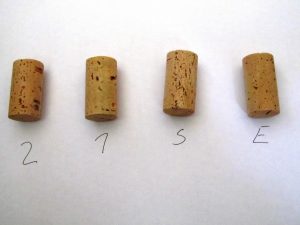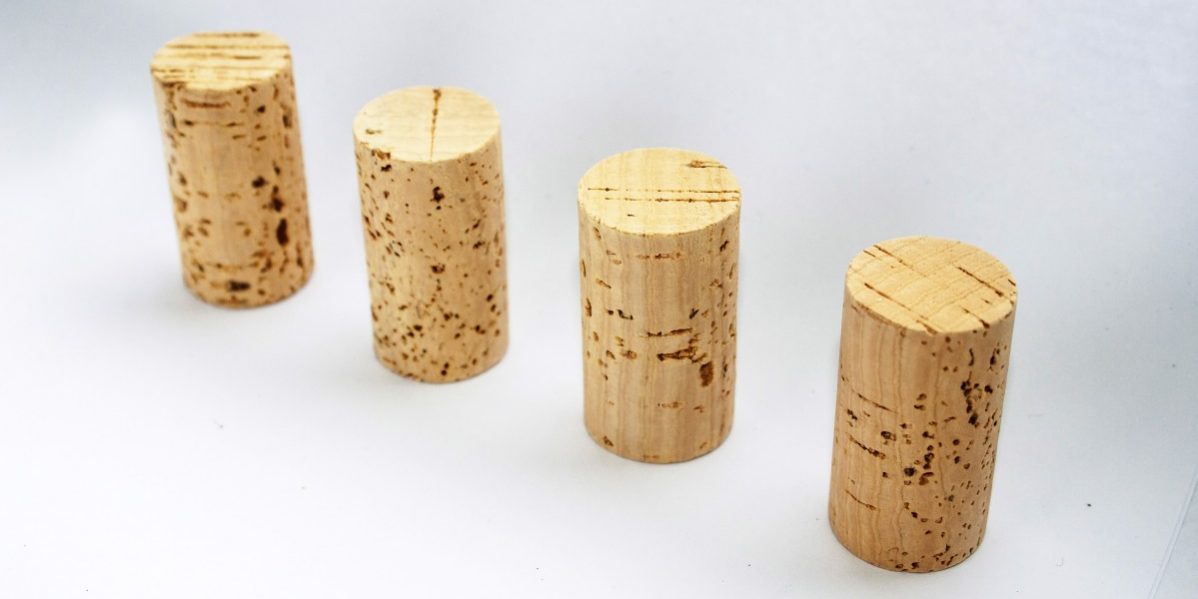Natural wine corks are still used to seal the vast majority of the world’s best wines, because all the other solutions (either synthetic or other cork options, such as micro-agglomerated, normal agglomerated or 1+1 technical corks) do not offer the unique properties that natural cork offers as well as the cosmetic appeal. We are not going to look at which is the best cork option for wine bottles here, or how natural wine corks are made. Rather we are just going to look at classification.
Natural wine corks are generally classified as Flor, Extra, Super, First, First/Second, Second and Third. The main differences between the different options are cosmetic, but sorting them out into the different categories is a major headache for cork producers. There are 6 stages of quality selection:
1. It starts with the selection of the cork as it comes off the trees; high quality cork bark will be thick and will be relatively smooth throughout its thickness, so the cork producers make their first selection when they buy the cork from the cork forest owners.
2. The large planks of cork are cut to smaller sizes by men with very sharp knives – as they cut they also separate the best looking pieces of cork with greater thickness and smoothness from the less good parts.
3. After being boiled (cooked) to make the cork more pliable (and to disinfect it), the boards are cut into strips, which then have the corks punched out of them, like a hole punch going through paper. For premium cork production, this is still done by hand, with experienced workers taking the strips of cork in their hand and choosing the best place from the strip to punch the corks from (so they will look for the smoothest sections). In the photo below you can see the effect (here the corks have been replaced into the holes they came from).

4. These corks are now trimmed to size and washed to make them completely sterile, after which they are machine sorted. This is done by passing the corks one by one through a laser, which analyzes their surface and separates the smoothest corks from those with more imperfections. The lower quality corks are then taken out of the selection process (they can be used to make colmated corks, for 3rd quality corks or regranulated).
5. The corks that pass the machine test are then put on a conveyor belt, which also slowly rotates the cork as they pass along. Sitting next to the conveyor belt will be several women (in the cork industry it is still always women!) who will inspect every single cork and reclassify any that they see the laser has classified incorrectly.
6. Finally the samples of corks from every production batch are taken for lab analysis to make sure nothing has been missed and their humidity level, shearing strength, dimensional recovery and sterility will be checked.
Different producers may have slightly different selection processes and of course some are more rigorous than others. There is a real problem with classification however in that there is no universal system of distinguishing one quality grade from another. So for example one cork producer’s “Extra” might be another’s “Super”. And to complicate things even more there are major divergences between countries as to what is generally considered a certain grade of cork. So a certain cork producer will know that when he sells his first grade corks in to country A he should classify them as Super, but when selling to country B he should classify them as First/Second. It makes it extremely difficult for wine bottlers to compare pricing from one cork supplier to another and the only way to do it is to compare samples and hopefully to build up a relationship of trust with their supplier.
The final complication is that it is unfortunately common for cork distributors in their various countries to reclassify and mix up corks that they receive from their supplier in Portugal (Portugal supplies the vast majority of the world’s natural wine corks). So the will mix a batch of Second quality corks in with some Firsts and call them all first for example (Second quality corks would typically be around 30% cheaper than First quality, so it makes a big difference.
Below you can see a photo showing 4 different qualities of natural wine corks (Second, First, Super and Extra):

The differences are mainly cosmetic as the way they have all been made and processed is exactly the same. Unfortunately the only way you can make sure that you will get what you pay for is to work with a trustworthy supplier and to buy corks direct from Portugal, so that you do not buy reclassified corks from local distributors.







